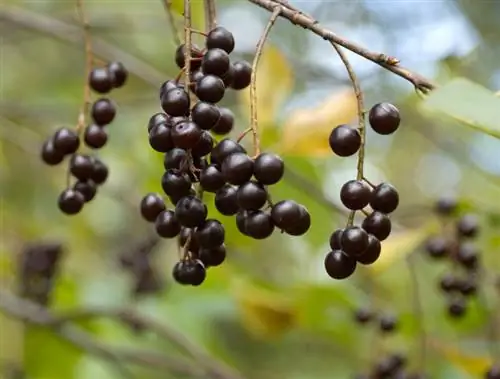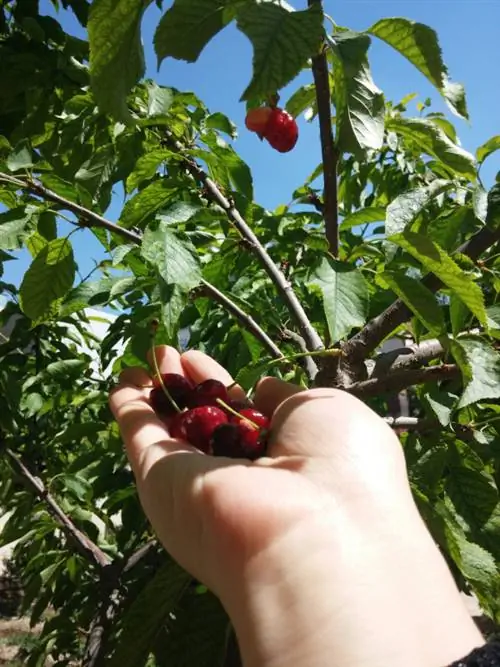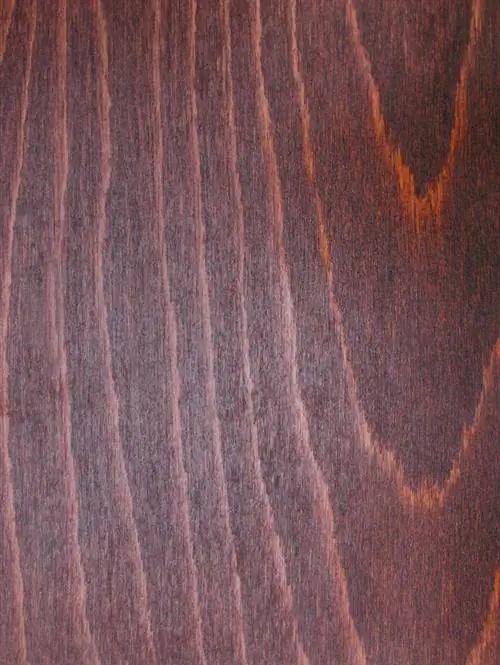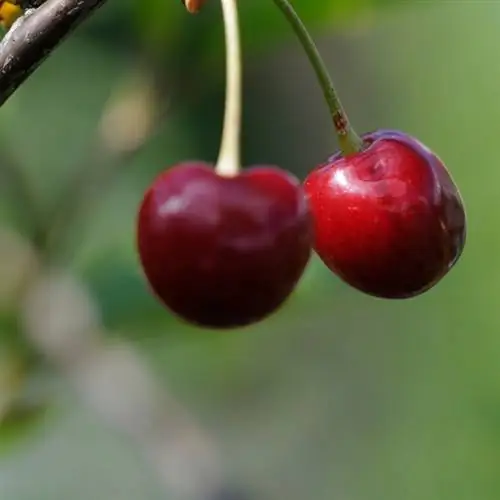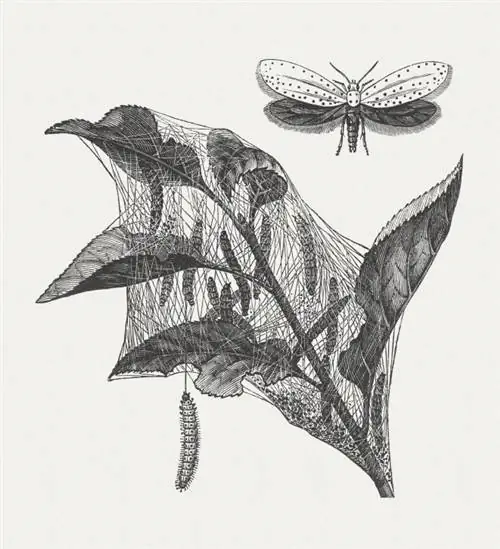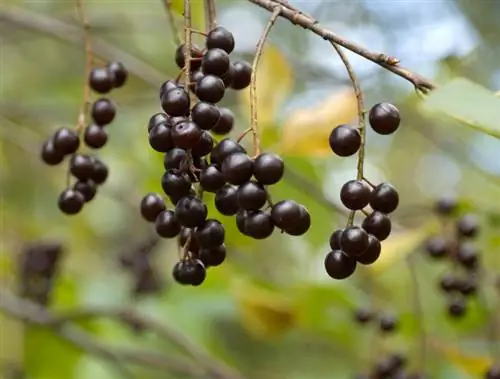- Author admin [email protected].
- Public 2023-12-16 16:46.
- Last modified 2025-01-23 11:20.
Every now and then it happens that the bird cherry is confused with the sour cherry or the late bird cherry. This can have serious consequences due to their toxicity. The leaves of the bird cherry can be easily distinguished from those of the potential confusion plants from spring to autumn.
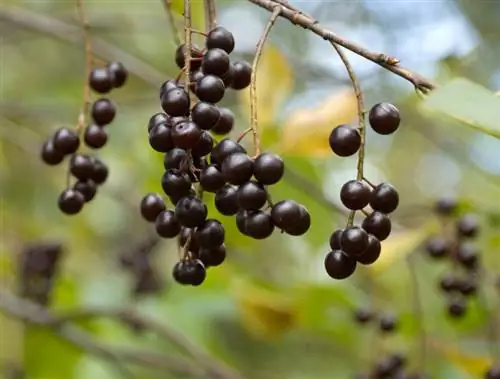
How do I recognize the leaf of a bird cherry?
The bird cherry leaf can be recognized by its elliptical shape, sharply serrated edge, recessed veins, light green foliage and gentle hairs. When rubbed, it releases a bitter almond scent due to the hydrogen cyanide compounds it contains.
At first sight
The leaves of the bird cherry unfold from pointed buds and arrange themselves in an alternating sequence around the wood. They reveal themselves early in the year compared to other deciduous trees. They usually sprout in April.
Shortly after budding and in summer they turn a dull green. The underside is lighter and describes a light blue-green. In autumn you can watch the deciduous foliage of the black cherry changing color in front of many other plants. It takes on shades between yellow, orange and red.
On closer inspection
Each leaf attaches to a 1 to 2 cm long stem. The stem is surrounded by two greenish nectar glands at its tip. The undivided leaves are similar in shape to an ellipse. The shape can vary to obovate.
Here are more details so you can recognize the leaves:
- 3 to 5 cm wide, 6 to 12 cm long
- sharp and finely sawn edge
- long pointed end
- deepened veins (this makes them look wrinkled)
- soft hairs
When you crush the leaves, you will notice a scent reminiscent of bitter almond. This is due to the hydrogen cyanide compounds (amygdalin and prunasin) contained in the leaves. Therefore the leaves should not be consumed. They are poisonous.
If the leaves differ from the familiar image
The leaves of the bird cherry are less likely to be affected by diseases. Among other things, scab and leaf spot can occur. Pest moths like to nest in or on the plant. They encompass the shoots and leaves and make the overall picture appear unattractive.
Tips & Tricks
Sometimes it is not easy to distinguish the bird cherry from the late bird cherry. In contrast to those of the late bird cherry, the leaf veins of the (common) bird cherry do not extend to the edge. In addition, the foliage of the late bird cherry is darker and shiny.

